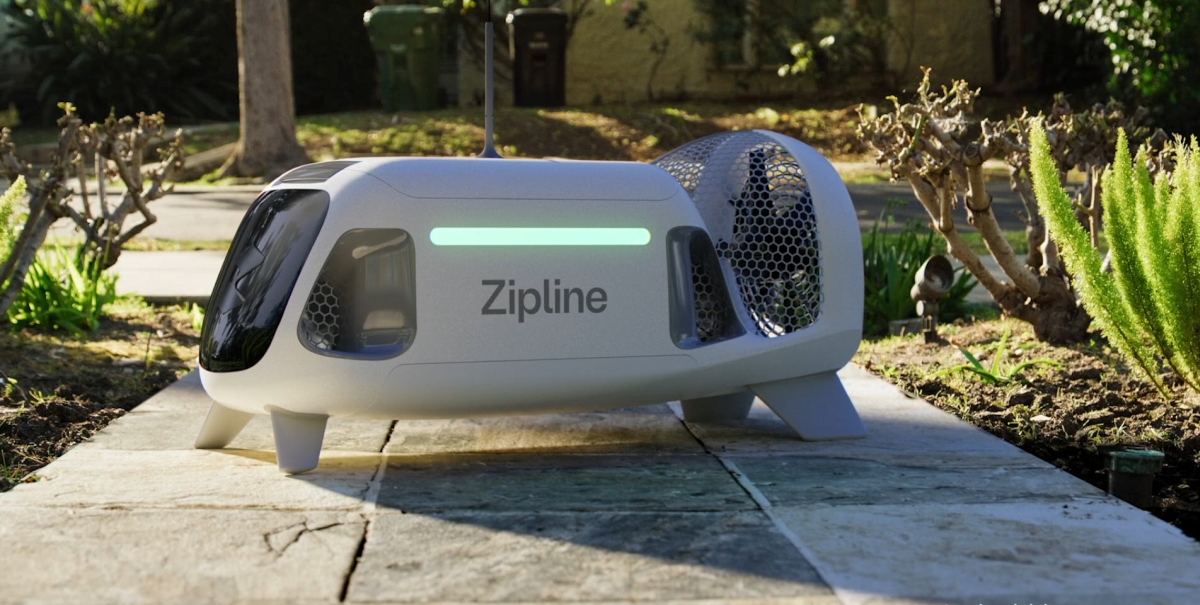IoT Evolution, the leading media brand for the Internet of Things (IoT), has published a book outlining more than 150 of the leading trends in the IoT industry, entitled “IoT Time: Evolving Trends in the Internet of Things.” The book, written by IoT Evolution Editorial Director, Ken Briodagh, seeks to explore the factors that have shaped the recent past of the developing industry and use those to predict the trends that will drive the next period of growth. Each of the trends is explicated and illustrated with a case study or product review that supports each position.
In this weekly series, we’ll be previewing chapters for you to read in the hopes that you’ll like enough to read the whole thing. To do just that, for free, click here. Alternatively, there’s a paperback version available on Amazon for $14.99.
Chapter 12: Transportation Logistics
Trend: Municipal leadership
Kansas City Shows Off Supply Chain Plan for Smart City
The Kansas City SmartPort freight-based economic development organization hosted Microsoft’s head of supply chain management at its annual industry briefing to talk about how technology is changing the way companies produce and distribute products around the world.
“The KC region is recognized nationally for innovative approaches to community planning and development. Our region will receive significant Federal funding to implement Smart Transportation in partnership with Google, and Cisco has picked KC to be one of the world’s first Smart Cities,” said Chris Gutierrez, president, KC SmartPort. “We are proud to carry that innovative thinking into discussions around making our regional supply chain companies more successful in today’s global marketplace.”
The panelists and speakers at the briefing represented national experts on wearable technologies, drones, the IoT, 3D printing and cloud computing, all of which are drastically changing how the supply chain industry does business. They included keynote speaker Mark Heinrich, GM, Strategic Sourcing and Supply Chain Management, Microsoft; Jeff Risley, business development leader, Bartlett & West; Mitch Free, founder and CEO, Cloud DDM; Dan Pinkham, director, operational excellence, Compass Minerals; and Andrew Ehlers, VP, channel sales, NA Central U.S. and Canada, Zebra Technologies.
The group discussed how technologies are being applied in innovative new ways to create greater visibility and efficiency in the supply chain, as well as creating a new supply chain workforce.
“When you talk about logistics and the technology revolution going on, logistics is the new manufacturing,” said Heinrich. “This is especially true in Kansas City where you can reach nearly the entire U.S. population within 48 hours by truck. The thing that is amazing to see is how this is changing the face of the workforce in Kansas City.”
Smart City infrastructure is beginning to gain purchase all over the world, and Kansas City is making a strong case to lead the U.S. in implementation. We’re looking forward to seeing this project begin to bear fruit.
Trend: IoT for rail
Future Rail in Singapore Will Leverage IoT for Fares
A consortium of Cubic Corporation subsidiaries in Australia and Singapore have signed a contract with the Land Transport Authority (LTA) in Singapore to design and deliver automated fare collection equipment for the authority’s future railway, the Thomson-East Coast Line. The contract for $35.5 million ($48.5 million Singapore) includes the design, development, test and integration with LTA’s current fare collection system. Under the agreement, Cubic will deliver a full suite of devices for deployment in stations and operations depots. The contract marks Cubic’s renewal of customer relations with LTA that began with the region’s original fare collection system in the 1980s, followed by the 1999 win to supply Cubic’s General Ticketing Machines. The system was the first of its kind to issue and recycle contactless smart cards for single trips as well as topping up reloadable smart cards using notes, coins and bankcards. The LTA’s Thomson-East Coast Line is under construction with the first stage to be launched in 2019 and the last stage to be completed in 2024.
“We are delighted to have been selected for this contract, which is part of LTA’s goal to increase connectivity for commuters not directly served by the rail network currently,” said Tom Walker, managing director, Asia-Pacific, Cubic Transportation Systems. “Cubic’s experience with payment systems for many of the world’s largest transport systems was a key factor in the process, and we are excited by the opportunity to re-establish our footprint with the LTA, an important and respected customer of many years.”
Rail and other mass transportation systems are the natural home for this type of IoT integration, not just for fares, but for scheduling and safety systems as well, and this will likely not be the only such integration in this system.
Trend: Signaling links for safety
Audi Cars Link to Traffic Signals
Audi has released its first vehicles equipped with the ability to receive information from traffic lights. The German carmaker hopes that these new cars will be the first step in creating smarter and safer cities. Although this feature may reduce traffic and collisions in big American cities, Audi manufacturers are most concerned with providing their drivers with quality information and convenience.
The particular models that are equipped with this technology include the 2017 Q7 and A4 models. Audi manufacturers are in talks with local governments and communication companies to open networks in five to seven major American cities. Audi is working with the Traffic Technology Services (TTS) in Oregon to get the information it needs for traffic signal communication. The TTS gathers data from many traffic signal systems across the nation and it can predict when individual lights will change with great precision. Audi's new cars are able to wirelessly communicate via an Idirect VSAT network with the TTS headquarters to provide drivers with information about local traffic lights in select cities. All of this data is transferred wirelessly over a cloud platform.
Drivers are able to see right on their dashboards if a green light is about to turn red, or how long it will take before a red light changes back to a green light. Audi hopes that this will reduce driver anxiety. This company also hopes this technology will increase safety on the road. This technology will also let the driver know if he/she won't be able to make it through a changing green light. Audi's new cars are able to retrieve all of this information because they have an LTE data modem inside them. However, Audi has plans to use both dedicated short range communications technology, which is a variant of Wi-Fi, as well as cellular technology in the future. Audi officials admit that this technology is only a first step in communicating with infrastructure, and they hope to enhance the performance of this communications technology as time wears on.
These autos will have huge effects on how the cars of tomorrow communicate with the infrastructure around us. There is great hope that this is only the beginning of various innovations in how cars can communicate with their environment in the future. Audi has mentioned that it is interested in pursuing vehicle-to-vehicle communications as well. This communications technology will allow cars to talk with each other, hopefully reducing the number of crashes on the road.
The countdown function for when a red light will turn green ends at four seconds. Audi designers did this intentionally so that drivers will have to look at the traffic light again before moving forward. Once the four seconds leaves the dashboard, the speed limit appears where the seconds used to be.
Trend: Easing traffic congestion
San Antonio Gives Traffic Management a Green Light
The City of San Antonio is working with Cradlepoint, a cloud-based network solutions developer, to scale up its traffic management system to meet high population growth expectations by leveraging IoT and Smart City strategies. Thanks to this project, San Antonio has reported a nearly 100 percent rate of communication across its network, while reducing the resources needed to maintain the network. The city is currently home to 1.4 million people, and traffic congestion had become a big headache, so city leaders contracted with Cradlepoint to implement an always-on, cloud-managed primary LTE connectivity across its distributed traffic network.
“As the commutes for our motorists began to slow, we knew we had to implement a new solution that would address our network communication issues. However, this could be a huge, intimidating undertaking for staff of just 16 individuals. Cradlepoint took the uncertainty out of the equation,” said Marc Jacobson, manager, Traffic Management Center, City of San Antonio.
“Cradlepoint has changed our mindset to the point that we are beginning to come up with new ways to utilize cloud-managed LTE to make our jobs easier, and to make the ride better for everyday commuters.”
The execution included cloud-managed COR IBR1100 LTE routers as the primary WAN source throughout the traffic management network. Now, the Traffic Management Center has the scalability required to meet the city’s expected growth without sacrificing speed or connectivity.
“As cities grow, their infrastructure will need to adapt to the growing needs of the general public. Cradlepoint is dedicated to providing solutions that integrate the best of cloud, SDN, and 4G LTE to not only address the network issues of today, but also to easily scale networks to efficiently meet future demands,” said Ian Pennell, CMO, Cradlepoint. “For the City of San Antonio, this means the Traffic Management Center can initiate Smart City initiatives, begin to ease traffic congestion, and create a better commuting environment for residents, tourists, and future San Antonians.”
Trend: Parking solutions
SAP IoT Seeks to Park Better with New Solution for Smart Cities
SAP has created the SAP Connected Parking solution IoT software in order to help parking management firms take advantage of the cloud, smart devices and Big Data technologies. It is designed to give parking providers access to a digital backbone for more efficient operations and improve use, visibility and efficiency. Technology partners include DESIGNA Verkehrsleittechnik, which has signed an agreement to integrate the solution with its parking management systems and kiosks, and Bosch Service Solutions, which recently announced integration with the Bosch Secure Truck Parking service.
“SAP is helping customers map their journeys through digital transformation, and IoT has the potential to drive the largest segment of growth in new business value,” said Tanja Rueckert, EVP, LoB Digital Assets and IoT, SAP. “SAP Connected Parking is an excellent example of how businesses that manage self-service terminals and kiosks can leverage robust IoT cloud and application expertise from SAP and our partners to transform their business models and the parking experience for drivers of all vehicles.”
SAP Connected Parking uses the SAP HANA Cloud Platform to manage parking locations and integrate with client hardware components to offer a comprehensive parking access revenue control (PARC) solution.
“As a world leader of parking management solutions with 65 years of experience in the industry, our goal is to develop innovative parking solutions that combine unique industrial design and an intuitive user experience while continuously reducing the operating costs,” said Dr. Thomas Waibl, CEO, DESIGNA. “We are pleased to integrate the IoT solution from SAP, the world leader in enterprise cloud software, into our parking systems to offer a next-generation service to our customers.”
While parking kiosks are one of fastest growing market segments for unattended kiosks, parking remains highly fragmented and localized. Inefficiency in urban parking and truck parking negatively impacts commerce and quality of life.
Trend: Drone deployments
Nokia Showcases LTE for Smart City Drones
Unmanned Aerial Systems (UAS), as drones are properly called, have real world IoT applications outside of the hobbyist community and most of them fall well within the broad embrace of the Smart City. Nokia has built a concept Unmanned Aerial Vehicle Traffic Management (UTM) system, and the healthcare, logistics, agriculture, news and entertainment industries are all eagerly playing with UAS and finding real efficiencies and safety enhancements. Carefully managing UAS operations is becoming a real challenge for governments and aviation authorities. Nokia says its technology provides centralized monitoring and control of UAS via an operator’s existing LTE network or dedicated LTE networks run by government or public safety departments. This allows for oversight and regulatory controls.
“LTE enables innovative high-bandwidth services for the telecom industry and beyond. With market-leading LTE expertise, Nokia's UTM concept for operators and authorities can enable the safe operation of drones as part of the development of smart cities in UAE and around the globe,” said Joachim Wuilmet, head of Customer Marketing and Communications, Middle East and Africa, Nokia. “Nokia innovations such as this are well aligned with our vision to expand the human possibilities of technology in the connected world.”
The technical details are pretty impressive. LTE network technology combined with a Mobile Edge Computing platform acts to power the home base and monitoring stations, while drones are equipped with LTE dongles, GPS and access modules for telemetry data. Computing and processing components monitor airspace, view and control UAS flight paths and transfer telemetry data as well as establish dynamic no-flight zones. It also includes a mobile app for UAV pilot with UTM interface.
Using UAS is becoming more common, as more industry sectors find profit from their use.
Trend: Platooning for efficient supply chain
US DoE Funds Smart Powertrains and Platooning with Purdue
The Next-Generation Energy Technologies for Connected and Autonomous On-Road Vehicles (NEXTCAR) program sponsored by the U.S Department of Energy’s Advanced Research Projects Agency-Energy (ARPA-E) is designed to apply next-generation Connected Transportation technology to truck platooning and concepts for smart, cloud-connected powertrains to achieve 20 percent fuel savings for tractor-trailers. Purdue University leads the NEXTCAR project team, with Peloton Technology, a connected and automated vehicle technology company for freight transportation, Cummins, Peterbilt Motors Company, ZF TRW, the University of Arizona and the National Renewable Energy Laboratory (NREL).
Contributions from partners include Peloton’s current platooning system and higher-automation platooning technology under development, advanced powertrain solutions from Cummins, steering controls from ZF TRW and state-of-the-art trucks from Peterbilt.
“As we join in launching this national project, we are excited about the team’s complementary strengths in commercial powertrain development, connected vehicle applications, vehicle automation and trucking operations,” said Josh Switkes, CEO, Peloton. “Our first truck platooning system is coming to market in 2017. This project will build upon our existing system and is complementary to the higher-automation solutions we are developing next. We appreciate the leadership shown by ARPA-E in creating the NEXTCAR program and by Purdue in assembling our team.”
The partners are developing, integrating and demonstrating a set of co-optimized powertrain and automated driving controls to improve the fuel efficiency of tractor-trailers, which consumed over 40 billion gallons of diesel fuel in 2015 according to the American Trucking Associations. By combining novel algorithms, look-ahead data and vehicle-to-vehicle (V2V) and vehicle-to-cloud (V2C) connectivity, the team aims to reduce the fuel use of a baseline Class 8 Peterbilt 579 by 20 percent in real-world driving conditions. That level of savings across the U.S. tractor-trailer fleet would translate to upwards of 8 billion gallons in diesel fuel and 80 million tons of carbon dioxide emissions conserved annually. The new controls require minimal hardware changes and can be programmed into electronic control units (ECUs) that are already on the trucks. This approach means that innovations that emerge from the project can be commercialized at low cost.
The significant gain in platooning efficiency over the three years of the NEXTCAR project will be the sum of several technology advancements, including the development of powertrain set points optimized for when trucks are operating in platooning mode, and the integration of steering control which will raise the system from a Level 1 to Level 2 automated driving system under industry-standard definitions of SAE International.
“We are delighted to have Peloton on the team,” said Greg Shaver, professor of mechanical engineering at Purdue and principal investigator for the project team. “Peloton brings thought leadership and proven, compelling results in Class 8 truck platooning and connectivity. I cannot imagine pursuing this ambitious project without Peloton’s significant participation.”
The NEXTCAR are launching the three-year project in March 2017. The team will receive a total of $5 million from ARPA-E and will provide additional cost share funding. The Purdue-team has been offered the largest award (tied with Ohio State University) of 10 total NEXTCAR Program projects.
Trend: Public-private partnerships
Cubic & University of Melbourne Build 'Urban Laboratory' for Connected Transportation
Public and private partnerships are shaping up to be critical to the development of IoT executions and solutions for Smart City and Smart Transportation initiatives all over the world. Cubic Transportation Systems (CTS), part of Cubic Corporation, and the University of Melbourne signed a Memorandum of Understanding to partner on the development of a National Connected Multimodal Transport (NCMT) Test Bed, which will deliver the first implementation of Cubic’s Surface Transport Management Solution (STMS). This NCMT Test Bed was the world’s first urban laboratory capable of large-scale testing and implementation of IoT technology in complex urban environments. The testing will explore ways to address population growth and the resulting traffic increases by studying traffic data, public transportation use rates and parking statistics. It will also focus on multimodal transportation systems including connected vehicles, roadways, freight, city logistics, public transportation, smart stations, pedestrians and cyclists.
“Our transportation infrastructure is under severe pressure and this is only going to increase. Governments need to make operations more efficient, while allowing customers to easily connect with all the services and infrastructure we have created,” said Tom Walker, SVP and managing director, CTS Asia-Pacific. “To achieve this, cities need to take advantage of the massive amounts of data currently at their fingertips and realize new opportunities to connect different systems and create a level of higher intelligence about the system as a whole.”
The STMS will provide the transportation planners with a system for data use and analysis, connecting different systems and data sets to provide planners with a holistic real-time view of travel across the entire network. This integration of public, private, freight and active transportation information is essential in guiding strategic decisions to improve traffic patterns, reduce congestion and revolutionize city planning. It will also enhance customer experience through providing a higher quality of information to travelers about all transportation modes from one personalized account.
“We are keen to establish long-term partnerships with leading transport engineering solutions providers, and working with Cubic on the NCMT Test Bed will allow testing and implementation of connected transport in a real-world and dynamic environment,” said Majid Sarvi, professor, Transport for Smart Cities, Department of Infrastructure Engineering, University of Melbourne. “The NCMT is an integrated platform connecting tools and enablers, which will empower governments and wider industry to examine different mobility and transport scenarios in preparing for future smart cities.”
In this weekly series, we’ll be previewing chapters for you to read in the hopes that you’ll like enough to read the whole thing. To do just that, for free, click here. Alternatively, there’s a paperback version available on Amazon for $14.99.
Edited by
Ken Briodagh





